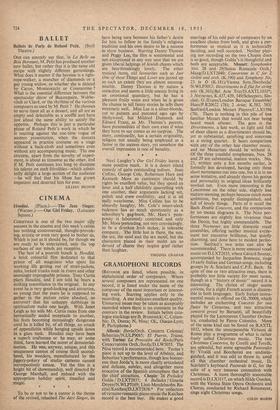BALLET
ONE can scarcely say that, in La Belle au Bois Dormant, M. Petit has produced another new ballet, but rather that it is the same old recipe with slightly different garnishings. What does it matter if the heroine is a tight- rope-walker, a muncher of diamonds or a gay young widow, or whether she is danced by Caron, Montevecchi or Constantine ? What is the essential difference between the spectacular decor of Beaurepaire, Wakhe- vitch or Clay& or the rhythms of the various composers as used by M. Petit ? He chooses to serve them all as a dessert, and all are as empty and delectable as a souffle and have just about the same ability to satisfy the appetite. Perhaps this is just a particular phase of Roland Petit's work in which he is reacting against the one-time vogue of austere presentation, when the dancers appeared in practice costume on a stage without a back-cloth and sometimes even without any accompanying music. The one extreme, apart from the novelty of experi- ment, is about as tiresome as the other, and if M. Petit continues too long to dissipate his talents on such frivolities—which admit- tedly delight a large section of the audience —he will find that his Muse has grown impatient and deserted him for ever. LILLIAN BROWSE










































 Previous page
Previous page